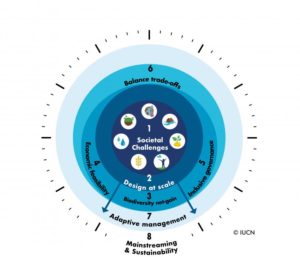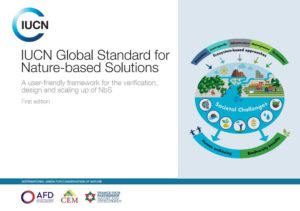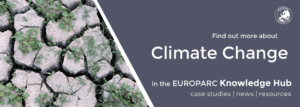IUCN Global Standard for Nature-based Solutions
Mangroves provide natural protection from climate change impacts. Source: Pixabay.
The current environmental and societal challenges call for highly efficient and sustainable solutions. With that in mind, The International Union for Conservation of Nature (IUCN) recently unveiled the Global Standard for Nature-based Solutions, intended for use by governments, businesses, investors, communities and NGOs.
The first Standard for Nature-based Solutions
The new IUCN Global Standard provides the first-ever set of benchmarks for nature-based solutions to global challenges. The publication should help governments, business and civil society ensure the effectiveness of nature-based solutions and maximise their potential to help address climate change, biodiversity loss and other societal challenges on a global scale.
The world is looking for durable and effective options to tackle global challenges such as climate change, food and water security, and now, economic recovery from the global pandemic,
said Stewart Maginnis, IUCN’s Global Director for the Nature-based Solutions Group. “For nature-based solutions to fulfil their potential, we must ensure that the actions put in place today bring about the desired benefits for society and biodiversity.”
Download and read the IUCN Global Standard here!
Nature-based Solutions around the world
Nature-based Solutions are defined by IUCN as “actions to protect, sustainably manage and restore natural or modified ecosystems that address societal challenges effectively and adaptively, simultaneously providing human well-being and biodiversity benefits”.
Nature-based Solutions have attracted more attention and became more popular over the last years. More than 130 countries have already included these actions – such as reforestation, green infrastructure, sustainable agriculture and aquaculture, or coastal protection – in their national climate plans under the Paris Agreement.

The eight criteria for Nature-based Solutions
However, not all actions labelled as “nature-based solutions” provide the anticipated benefits to both society and biodiversity, and that is why IUCN developed eight criteria and indicators that allow decision-makers to assess the aptness, scale, economic, environmental and social viability of an intervention.
The publication instructs users how to perform a self-assessment with the standard to:
- Design new Nature-based Solutions;
- Upscale pilots by identifying gaps and;
- Verify past projects and future proposals.
In order to consider possible trade-offs, ensure transparency and explore possible linkages to international targets and commitments, the Global Standard includes a user guide and self-assessment tool, identifying areas for improving and learning.

